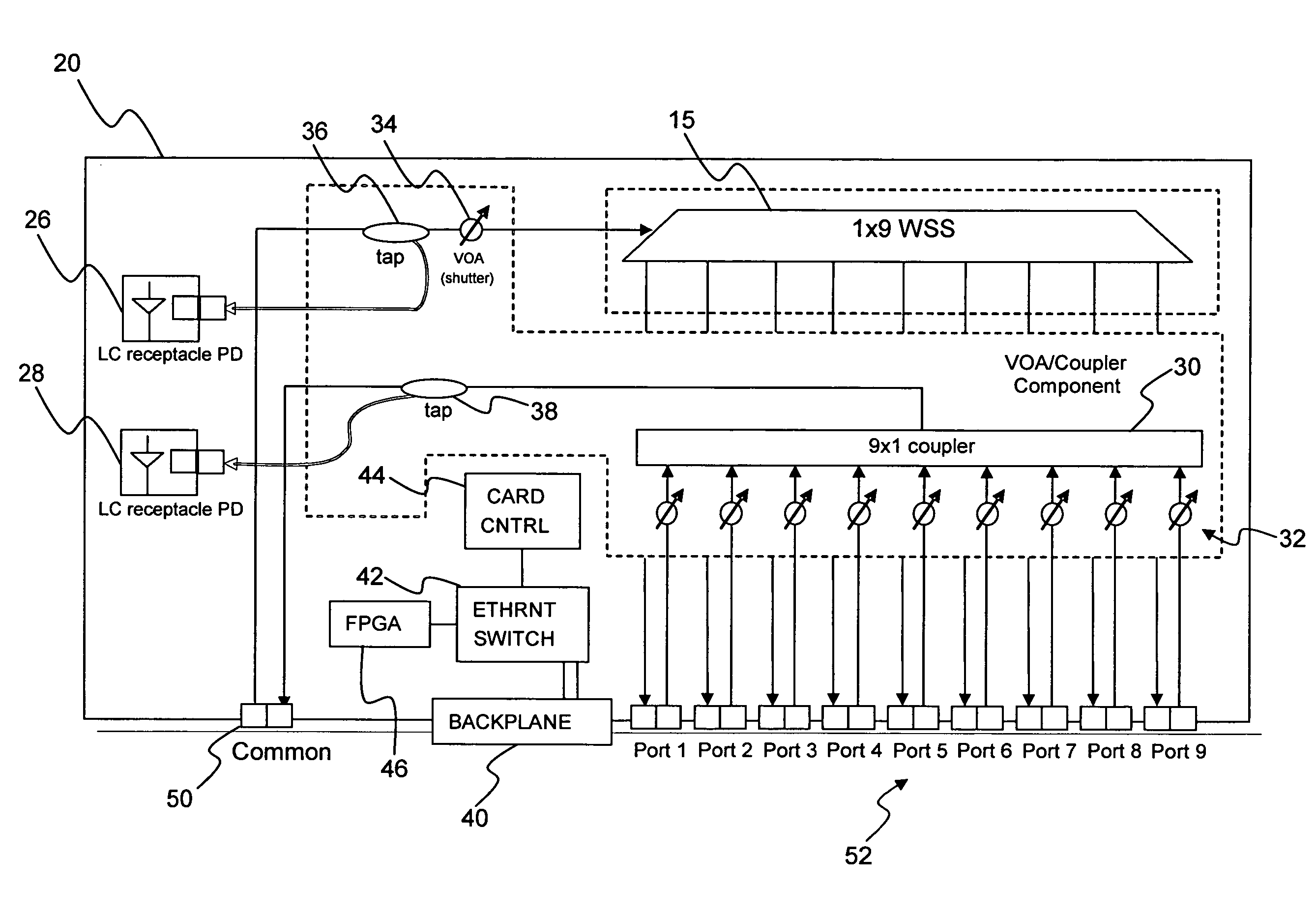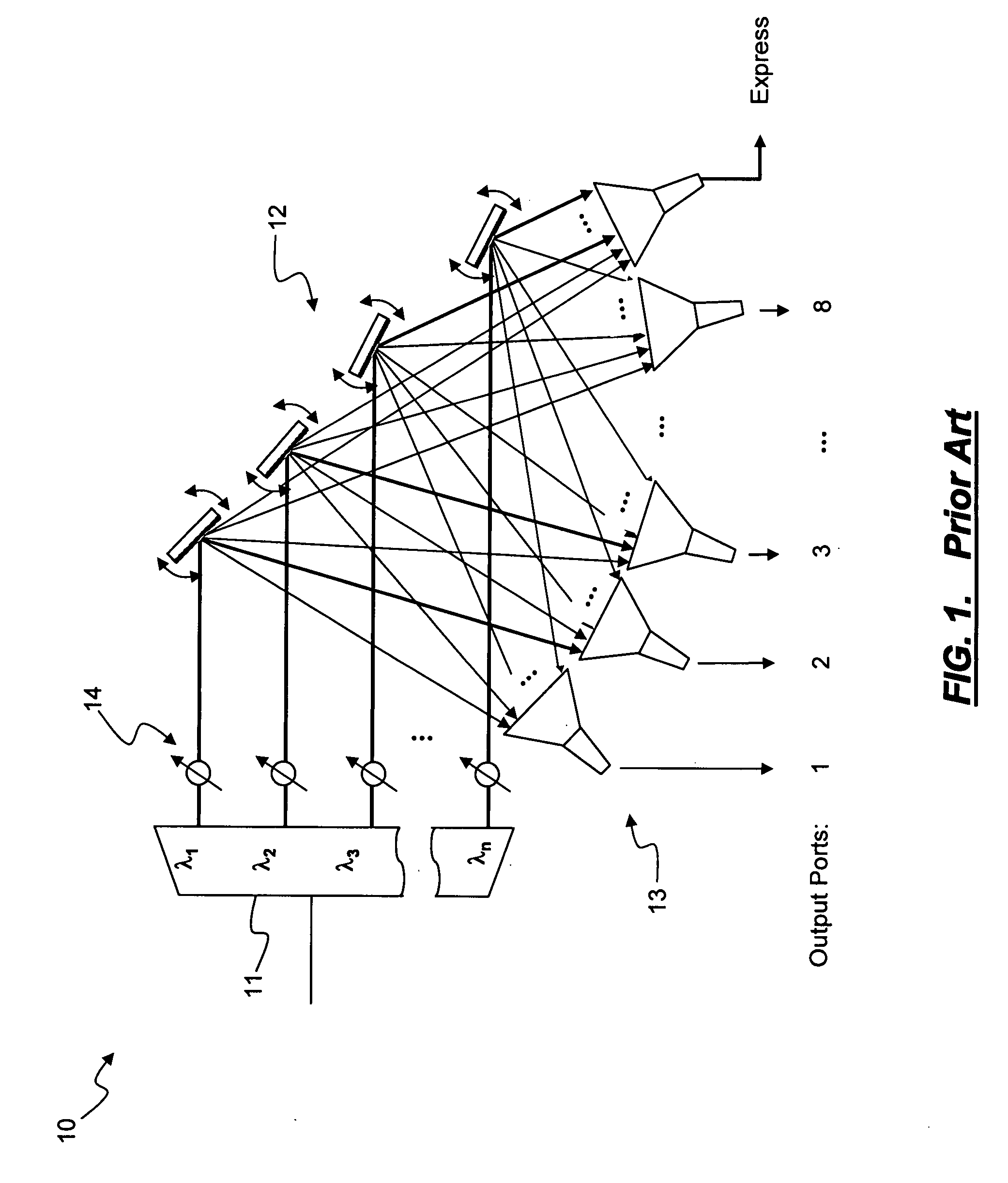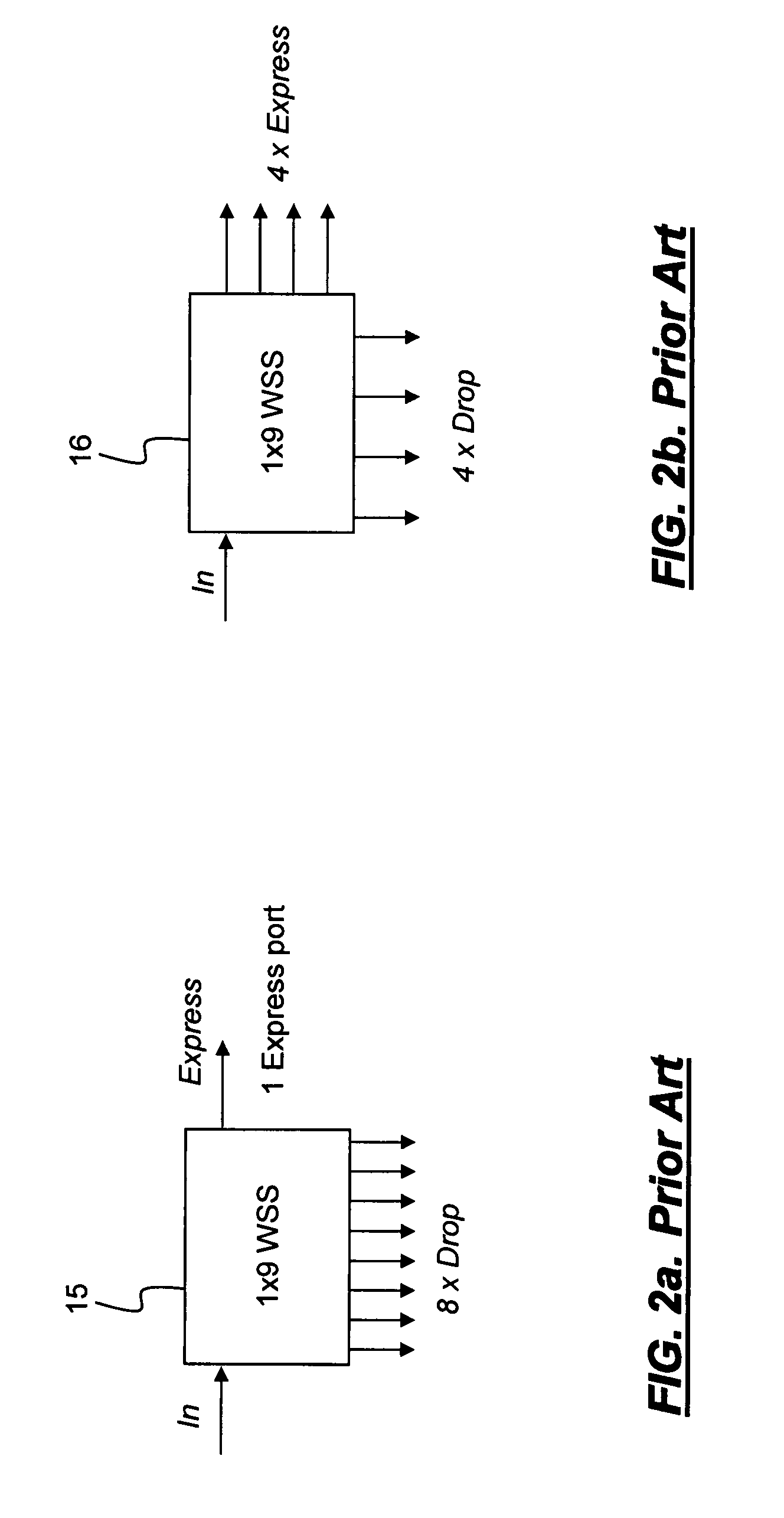Systems and methods for adaptive gain control to compensate OSNR penalty caused by side-lobe of MEMS-based reconfigurable optical add-drop multiplexers
a technology of adaptive gain control and side-lobe, applied in the field of optical networks, can solve the problems of system osnr penalty, system osnr penalty due to side-lobe, system has to take even more osnr penalty, etc., and achieve the effect of solving osnr penalty
- Summary
- Abstract
- Description
- Claims
- Application Information
AI Technical Summary
Benefits of technology
Problems solved by technology
Method used
Image
Examples
Embodiment Construction
[0028]In various exemplary embodiments, the present invention provides systems and methods to adaptively control amplifier target power and per wavelength target power to maintain signal launching power as per design in networks with WSS-based ROADMs. Accordingly, signal OSNR does not collapse faster than other similar configured system without WSS-based ROADM. In order to correct amplifier target power, the present invention utilizes system information about side-lobe size and OSNR at each amplifier. Related information, such as ASE level and size of side-lobes at each channel from upstream amplifiers, is passed to a network controller at each amplifier. Meanwhile, with target signal level and local WSS attenuation setting (given side-lobe size vs. WSS attenuation known) of each channel, the amplifier calculates what its total output power should be and adaptively maintains that power.
[0029]Advantageously, the present invention largely solves OSNR penalty caused by side-lobes of WS...
PUM
 Login to View More
Login to View More Abstract
Description
Claims
Application Information
 Login to View More
Login to View More - R&D
- Intellectual Property
- Life Sciences
- Materials
- Tech Scout
- Unparalleled Data Quality
- Higher Quality Content
- 60% Fewer Hallucinations
Browse by: Latest US Patents, China's latest patents, Technical Efficacy Thesaurus, Application Domain, Technology Topic, Popular Technical Reports.
© 2025 PatSnap. All rights reserved.Legal|Privacy policy|Modern Slavery Act Transparency Statement|Sitemap|About US| Contact US: help@patsnap.com



